Understanding Bird Affection: Is Petting Safe for My Bird?
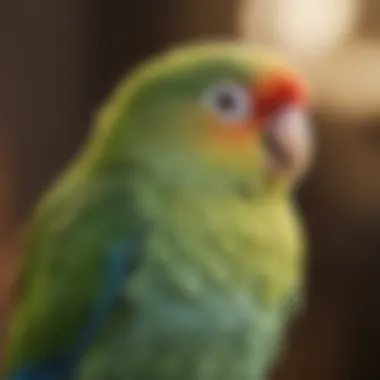
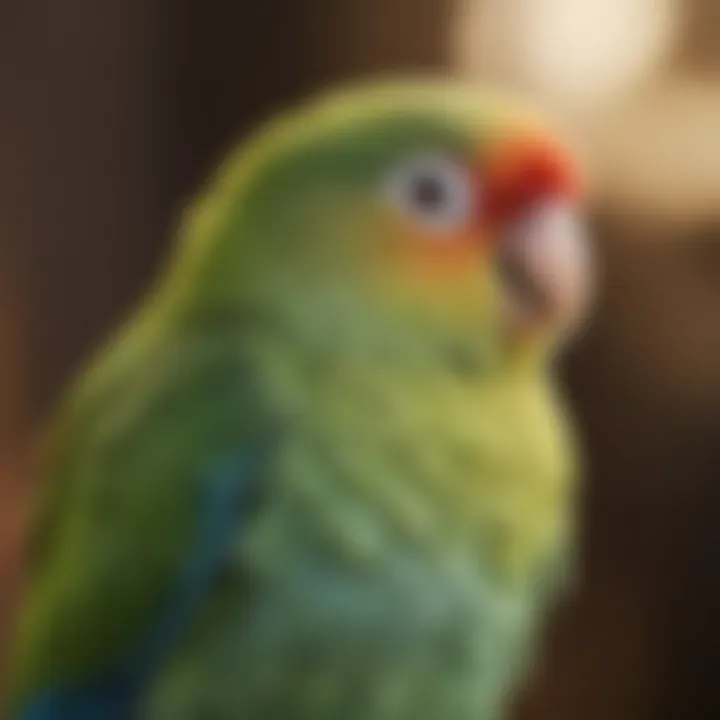
Intro
Pet birds are wonderful companions. Interactions with them shape their behavior and contour the experience of bird ownership. Physical contact, particularly petting a bird's head, can invoke various reactions in these delicate creatures. This section aims to unveil key elements about affection in birds. Understanding how to appropriately manage touching is pivotal. Both the owner's actions and the bird's response can lead to new levels of trust or even stress for the bird. Hence, defining the framework for these interactions becomes essential.
Care Tips
Daily Care Routines
Ensuring a structured daily routine is vital for any pet bird. Regular interactions help in creating a bond. Birds appreciate predictability in their environments. A solid routine may include feeding, cleaning, interacting, and engaging them through play. Petting a bird's head can be introduced lightly during times they feel comfortable.
Cage Setup and Maintenance
Caging is crucial in the avian world. The setup should simulate a safe environment conducive to health and well-being. Factors such as space, perches, and play areas influence your bird's interaction style. Setting up the cage correctly allows safe petting moments to take place more naturally. Regular maintenance is also necessary, ensuring the cage remains clean and hygienic. Dirty environments lead to stress and anxiety in birds.
Hygiene and Cleaning Practices
Hygiene cannot be at the periphery when it comes to bird care. Minimizing pathogens is fundamental. Regular cage-cleaning routines should consist of replacing daily papers and washing toys. This contributes to an overall sense of safety, important for allowing closeness between the bird and its owner, including petting.
Seasonal Care Adjustments
Bird care does not remain static. Seasonal changes necessitate adjustments in care routines. For instance, heat or humidity may vary through seasons, potentially leading to stress. Appropriate adjustments will result in optimal comfort. Further, seasonal feather changes should be monitored, as these affect individual bird sensitivities to touch, like a gentle head pet.
Behavioral Insights
Understanding Bird Body Language
A keen eye on bird body language is crucial for evaluating emotional states. Specific signs—such as relaxed feet or an actively preening bird—indicate contentment. Watch closely; the way your bird positions its head could express a desire for affection. Head tilts may represent an invitation for closeness.
Common Behavioral Issues and Solutions
Behavioural problems often emerge, hindering proper interactions like petting. Elements such as aggression towards hands can signify fear or discomfort. It is essential to address these issues patiently. Introduce hands gradually while respecting personal space, allowing the bird to explore a hand before initiating contact.
Positive Reinforcement Techniques
Gradual trust-building is significant. Utilizing positive reinforcement through treats reinforces the idea that petting can lead to agreeable outcomes. Establishing a routine of rewarding positive actions might achieve desired behaviors associated with touch.
Social Interaction Needs
Birds are inherently social creatures; understanding their social dynamics in avian social structures enhances the bond. Sufficient interaction and providing companionship to your bird can make them more accepting of physical affection, such as gentle head petting.
Nutrition Guides
Essential Diet Components
A balanced diet serves as the foundation for physical and psychological health. Pelleted diets, fresh vegetables such as spinach, and occasional fruits promote excellent health standards. Food types alter behavior, which can affect a bird's disposition towards touch. Taming takes time and patience as owners offer proper nutrition while developing companionship.
Safe and Toxic Foods
Recognizing safe versus toxic foods is crucial. Seeds serve an important role, but understand that certain varieties may pose risks. Sometimes just a small bite of something toxic leads to distress.
Supplements and Treats
Digestive health often necessitates the introduction of various unique supplements. However, keep treats occasional to inspire good behavior rather than calorie overload.
Feeding Strategies for Different Species
Different bird species have varied nutritional needs. Adjustments in feeding strategies empower birds like parrots or canaries through appropriate unique components to form healthier habits.
Wellness and Health
Routine Health Checkups
Scheduled veterinary checkups help ensure early identification of potential health issues. Birds thrive best through preventive measures rather than reactive treatments. Regular assessments confirm birds are of good health, easing owner concerns surrounding affectionate contact.
Identifying Symptoms of Illness
A diligent owner needs to learn the signs that indicate sickness. Consider changes in eating habits, reduced activity, or constant vocalization. Recognizing these symptoms can initiate timely intervention.
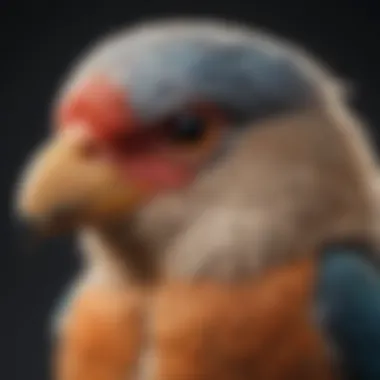
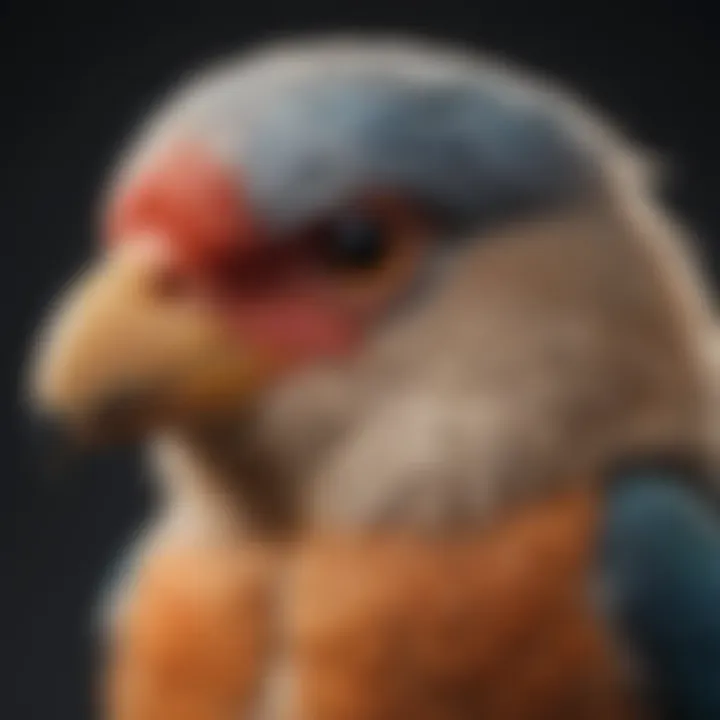
Preventative Care and Vaccinations
Preventative health acts as a safeguard. Vaccinations are essential, but so is enthusiasm around proactive care. Getting accustomed to intervention ahead of time reduces stress while familiarizing birds with occurrences of handling.
Mental and Emotional Well-being
Mental health matters just as much. The environment, stimulation, and owner connections can influence emotional well-being. Providing toys and companionship plays a part in realization all animals thrive on support and attentiveness to thrive Chicken owner understand the nuances in mental health promptly integrates physical love enduring friendships.
Enriching Activities
Toys and Playtime Ideas
Stimulate your bird through varied training and activities. Investing in durable engaging attachments inspires playtime both vital and productive elicited through enthusiastic efforts splendidly welcomed interactions encourage progress year listening understanding.
Training and Tricks
Effective communication thrives best through targeted experiences. Simplify training sessions aimed facts helps bloom staggering immediate responses parent achieving reliability illuminates clarifies insights relationships.
Outdoor Activities and Interaction
Birdowns strive for outdoor experiences where safe suitable encouraging diverse engagement ambient adjustments versions offer exhilarating fresh encouragement outside ensuring established values authenticate importance ain doesn't sway affection indications head petting.
DIY Projects for Mental Stimulation
Revamping the environment with Do-It-Yourself concepts nurtures creativity while improving health enormously reflective engagement thriving throughout memories moment share broaden connections broad.
Remember, the bonds built on trust facilitate genuine closeness as activity intersect delicate affection plays profound significant impact.
Intro to Avian Affection
Understanding the ways in which pet birds express affection is fundamental for bird owners. Recognizing these nuances allows for proper interaction and builds a stronger bond between the bird and its owner. This section will reveal how bird behavior and communication set the stage for affection. Additionally, it addresses the different aspects of avian care and emotional health, concluding with specifics about physical engagement, particularly petting.
Understanding Avian Behavior
Avian behavior is diverse and complex. Birds display various forms of social interaction that stem from their evolutionary history. Unlike mammals, birds may not rely on affection in a traditional sense; rather, expressions such as preening, flock holding, and vocalizing have deeper meanings. These behaviors are not just instinctual but adapted responses to social needs. Each species also demonstrates unique traits. Basic signs might include wing flapping in excitement or fluffing of feathers when comfortable. By observing these cues, a bird owner can better attune to what their pet communicates, fostering an environment conducive to polite interaction and affection.
It is essential for bird owners to study the species specifics for effective communication. For instance, a parrot may show tell-tale heart rates or postures relaying comfort versus discomfort. Moreover, recognizing stress signals such as head bobbing or retreating with body language enables owners to gauge readiness for affectionate gestures. Learning avian behavior lays the groundwork for a trusting relationship.
The Science of Touch and Birds
Touch plays an important role in avian emotional landscapes. For many species, touch evokes a range of psychological and physiological responses. It starts with understanding that a bird's skin and feather composition differ greatly from fur or skin in mammals. Birds have a different sensory structure that makes them uniquely reactive to touch. Their skin contains many sensory receptors that respond to light touch, temperature, and grooming, which communicate trust and safety.
Petting a bird's head can stimulate an avian sense of affection, mirroring social interactions observed in wild environments. For example, pairing sounds with touches tends to reinforce attachment mechanisms. Touch and positive interaction can produce a therapeutic effect, enhancing the mental well-being of the bird itself.
Therefore, before deciding to pet a bird, it becomes crucial to appreciate both the science and the emotional consequences of physical engagement. Ensuring that pampering sessions resonate with comfort helps solidify positive experiences and a lasting bond between the bird and its owner.
Understanding physical sensations in birds aids better decision-making for petting interactions and helps create mutually enjoyable experiences.
Anatomy of Birds and Sensory Experience
Understanding the anatomy of birds holds significant value when discussing physical interaction. Birds possess unique structural attributes that govern how they perceive the world and interact with humans. The way their skin and feathers are designed directly impacts the response to touch and influences their comfort level. An in-depth analysis of these elements can enlighten bird owners about the appropriate way to engage with their avian friends, especially regarding petting.
Bird Skin and Feather Structure
Bird skin is distinctly different from that of mammals. It is thinner and more delicate, which helps in various functions including thermoregulation and moisture retention. The outer layer consists of epidermis, beneath which lies the dermis containing blood vessels and nerves. One should consider that birds lack the same sensitivity in skin that humans experience, reflecting their adaptation to their environment.
Feathers, besides playing a critical role in flight, also serve an essential purpose in sensory perception. They have a remarkable structure featuring a shaft and barbs that allow them to respond to various stimuli. When it comes to petting, a proper understanding of feather structure is crucial. Petting against the natural lay of the feathers can cause discomfort and signal distress. Instead, petting should align with the feather direction, creating a more pleasant and safe environment for the bird.
Sensitivity of Bird's Head
The head of a bird houses various important sensory organs, including eyes, ears, and a beak equipped for feeding and exploring their surroundings. Touch sensitivity in this area is often heightened compared to other parts of the body. For example, many birds are particularly vulnerable to touch on their heads and may react negatively if approached incorrectly.
Birds may appreciate gentle stroking on their head, but signs of discomfort should be closely monitored. Behaviors such as head tucking, movement away, or beak snapping can indicate that interaction is unwelcome. A nuanced understanding of the sensitivity of a bird's head fosters a better relationship between the pet and owner, ensuring that every interaction has the potential to strengthen their bond.
Regular observation of your bird's reactions is key to forming a trusting relationship.
In summary, a detailed exploration of bird skin and feather structure, along with head sensitivity, informed by an understanding of bird behavior, allows pet owners to engage appropriately while respecting their pets' needs. Positive interactions depend largely on recognizing physical cues, which are deeply rooted in avian biology.
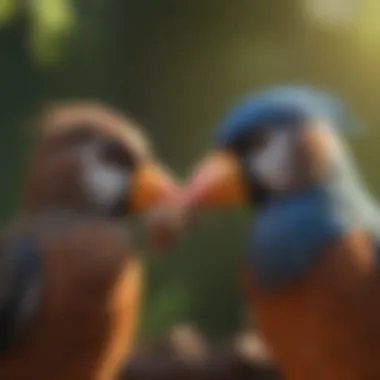

Can You Pet a Bird's Head?
The act of petting a bird's head can hold significant implications for both the bird owner and the pet itself. Understanding this practice involves more than simply physical touch. It encompasses behavioral cues, anatomical sensitivity, and the complex emotional responses of birds. In this section, we aim to provide a comprehensive overview, weighing both the benefits and considerations of petting your bird's head. This will support informed decision-making for those involved in the caretaking of birds.
Behavioral Signs of Comfort
Recognizing when a bird is comfortable with being petted is crucial. Birds exhibit specific behaviors that signal their readiness for physical interaction. Some of these signs include:
- Relaxed posture: If a bird is relaxed, it may puff up its feathers or perch gently with a seinf resting stance.
- Tilted head: When birds lean into the approach and tilt their heads slightly, they often invite touch from their owners or companions.
- Chirping or whistling: Soft sounds or vocalizations can indicate contentment, welcoming playful contact or attention.
Keeping an eye on their body language is essential. Individuals should remember that each bird's personality varies. Understanding your bird creates a foundation for physical affection that strengthens the bond with their bird companion.
Common Mistakes to Avoid
Petting a bird requires careful consideration to prevent anxiety or stress. Avoiding common pitfalls is key to ensuring a positive experience. Here are some aspects to watch out for:
- Overstepping their comfort zone: Not every bird is accustomed to being touched. Pushing physical interaction can lead to negative reactions.
- Inconsistent cues: Shifting between assertive and passive touches can confuse a bird, making comfort level uncertain.
- Ignoring body language: Missed signals like pinion wings or rapid breathing may indicate distress. Taking notice aids better relationships.
Failure to recognize or address these mistakes diminishes the fondness in the bond. Bird owners should instead strive to engage positively, ensuring a better enjoying experience.
Physical interaction can deepen the emotional connection between birds and their owners when approached with care and understanding.
The Psychological Impact of Touch
The relevance of touch in avian interactions cannot be overstated. Understanding how petting interacts with the avian charm offers valuable insights into deepening the bond between a bird and its owner. For birds, their experience of touch is complex, governed by their evolutionary traits, social needs, and individual personalities. Therefore, how to engage safely and gently is essential for ensuring their well-being.
Bonding Through Touch
Touch serves as a significant medium for fostering connection. In a world where clear and meaningful interaction thrives, one may find that petting can be a bridge toward trust. When you engage with your bird through gentle strokes, it can create a sense of safety which enhances the emotional well-being of both the bird and the owner. Birds, by nature, are social creatures, and through positive touch, owners can establish a bond that solidifies relationships.
Several benefits arise from touch:
- Reinforcement of Trust: Frequent gentle interactions can build trust over time. As your bird becomes more comfortable, it may start to respond with affection.
- Decreased Anxiety: For both birds and their owners, affectionate touches can ease tension and promote calmness. This connection can help ease nervousness, especially during change or stressful moments.
- Increased Affection: Mutual interaction enriches emotional ties. Petting may lead to flapping wings in delight or soft chirps of contentment from your bird.
Touch can be a transformative experience soothing your bird, establishing comfort levels, and encouraging a healthy relationship dynamic.
Potential Stress Factors
While touch has its benefits, consideration of potential drawbacks is necessary. Approaching your bird with too much enthusiasm or without a clear understanding can lead to stress responses. Recognizing the bird’s signals is crucial. For some birds, unwanted touch may induce fear or discomfort.
Some factors that may result in stress include:
- Overstimulation: Sensitive areas hold significance, and petting can result in sensory overload in some cases. An environmental context devoid of distractions is best during initial contact.
- Previous Negative Experiences: If a bird has been poorly handled before, any attempt to touch it may evoke defensive reactions. A history of trauma compounds the sensitivity around touching.
- Individual Differences: Every bird has its preferences. While one may enjoy head scratches, another might feel more secure remaining untouched. Understanding the unique traits of your bird deepens the sense of an emotional connection.
Remember, the path to establishing trust and comfort is gradual. Respect your bird's moments of pause and uncertainty. A relationship enriched by consideration and understanding paves the way for calming touch.
Best Practices for Petting Birds
Understanding how to properly engage with your bird physically requires a nuanced approach. Best practices for petting birds are essential to ensure the well-being of your avian companion. Among other things, these practices promote trust, respect, and emotional health. It is important to develop methods that both you and your bird find comfortable, as this can dramatically impact your bond.
Approaching Your Bird
When approaching your bird, patience is crucial. The first step is to understand its body language. If a bird isn’t comfortable, showing aggression or fear through feather ruffling or bites could occur. Start by speaking in a soft voice, letting your bird get used to your presence. Crouch down to its level to avoid appearing threatening. Hands should be kept low, away from the bird's head initially.
A gentle approach generally works best. This may include providing your bird with a treat before trying to pet it. You might try offering its favorite snack, such as a piece of fruit or a seed, hand-fed to strengthen the connection between the two of you. Above all, allow your bird to come to you at its own pace.
Techniques for Safe Petting
Petting should involve very gentle movements once trust is established. Use your fingertips, not the palm, as birds typically feel threatened by larger contact surfaces. Here are some helpful techniques:
- Gently Stroke: Start by lightly tapping on the crown of your bird’s head. This offers a soft introduction to direct contact.
- Use a Soft Touch: Always pet along the feather patterns. Ruffling can cause discomfort as birds are not accustomed to it. Be slow and watch your bird’s responses closely.
- Space Awareness: Understand your bird's personal space. Some may only enjoy head pets while others might allow more.
- Respect Redirects: If at any point your bird seems to show uncomfortable body language, cease physical interaction immediately. Many birds have their distinct boundaries.
Protecting your bird’s emotional state should always take precedence over the urge to pet. Stressful interactions can adversely affect their health.
By incorporating these best practices for petting into your daily routine, you'll nurture a relationship founded on mutual respect and understanding. Petting, viewed as a form of casual bonding, can serve to solidify that unique human-bird companionship if executed mindfully.
Species-Specific Considerations
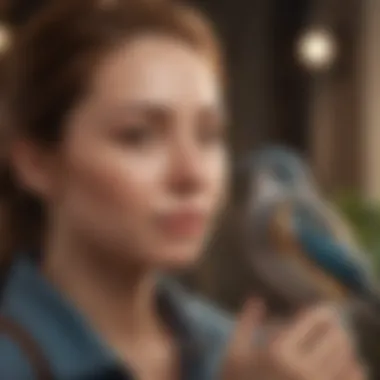
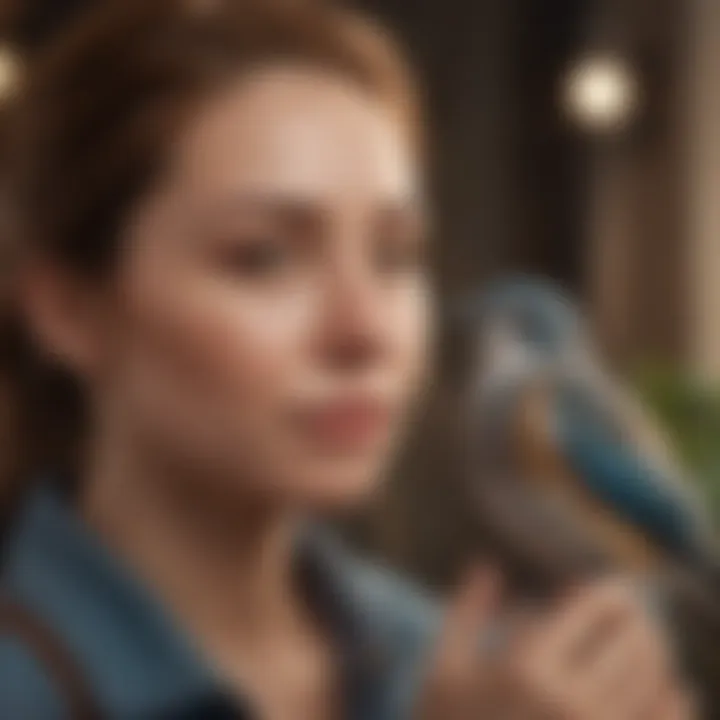
Understanding how different bird species respond to petting is crucial for establishing a positive and healthy human-bird relationship. Each species exhibits unique behavioral traits and preferences shaped by their natural history. This section emphasizes that no one-size-fits-all approach exists when it comes to petting your avian companion.
Moreover, recognizing species-specific behaviors can pave the way for more effective communication and bonding. Knowledge about an individual bird’s needs not only nurtures trust but also ensures their comfort.
Parrots and Their Individual Needs
Parrots are known for their social and intelligent nature, making them one of the most interactive bird species. Their strong social bonds with humans can resemble those found among conspecifics. When considering petting, parrots might greatly enjoy gentle head scritches. They often display positive body language, such as relaxing their feathers or leaning into the touch.
However, the key factor here is understanding each parrot’s personality. Some parrots may have a history of negative interactions, making them more cautious or defensive. Keeping an eye on behavioral cues—like lifted tail feathers or a lack of movement—can indicate discomfort with being touched. It’s beneficial to allow them to initiate the interaction themselves.
From early training, ensure that communication remains positive. Rewarding your parrot with regular praise or treats can build confidence in bonding moments.
Smaller Birds and Their Sensitivities
Smaller birds, such as canaries or finches, generally have very different sociability levels compared to parrots. They tend to be more sensitive to handling and might find direct touch overwhelming. According to various studies, these birds thrive when provided with calm environments and engaging settings, rather than physical caressing.
For these species, indirect interactions can promote trust. Sitting close to their habitat, talking softly, and providing tasty treats are effective strategies. This approach allows them to observe and adapt to your presence without stress from unwanted petting.
In summary, when considering the individual needs of each bird species, it is vital to ensure that interactions are rooted in their comfort zones. Tailoring your actions fosters stronger bonds and provides the best emotional support for your feathered friends.
Alternatives to Petting
Physical affection, like petting a bird's head, brings warmth and connection in many species. However, it's crucial to acknowledge that petting may not be suitable for every bird. Alternatives to direct petting play a significant role in building trust and ensuring emotional well-being. These alternate methods can not only help in maintainig a healthy bond but also prevent any potential stress or discomfort.
Understanding that birds thrive on relationship-building through activities other than touch encourages owners to explore innovative ways to connect. Consider this: some birds perceive direct touch as intrusive, especially in their comfort zones. Recognizing this possibility opens new pathways for interaction that can foster a sense of safety in the space you share.
Building Trust Through Indirect Interaction
One important alternative to petting is to engage in indirect interaction. This strategy focuses on observin your bird’s behaviors and preferences without physical touch. It might involve simply sitting near your bird, allowing them to approach you at their own pace. Here are some effective methods:
- Active Presence: Spend time near your bird, letting them observe your movements without forcing interaction.
- Conversational Engagement: Talk to your bird softly. Your voice can offer comfort, and they may start to associate the sound with positive feelings.
- Shared Activities: Offer enjoyable activities that encourage interaction, such as inviting your bird to speak, mimic, or respond to your voice. This builds trust without direct or physical contact.
The beauty of these interactions lies in the acknowledgment of their autonomy. Birds can often feel more secure in engaging when they feel in control. Slowly, this builds a foundation of trust that might eventually lead to comfort with touch.
Environmental Enrichment for Emotional Well-being
Providing a stimulating and enriched environment is key for birds' mental health. Environmental enrichment includes both physical and social factors. Creating a lively atmosphere invokes happy and curous behaviors which improves their overall emotional state. Some enrichment strategies include:
- Variety of Toys: Introduce different types of toys. Opt for chewable, puzzle-based, or toys that make noise. Birds need mental stimulus, just like they need physical activity.
- Changing the Layout: Regularly rotate the cage layout. New arrangements engage their natural curiosity and explorative instincts.
- Social Opportunities: Parrots specifically thrive on social interaction. If it’s feasible, consider adding another bird. Under careful introduction, birds can speak, play, and bond with each other, easing mutual loneliness.
Creating an enriched environment helps reduce stress and fosters a sense of safety. Engaging an imaginative mind without direct petting increases confidence and happiness.
In summary, it's essential to understand that while some birds may become comfortable with petting over time, many will respond positively to indirect engagement. Building trust through careful observation and exploration, combined with a stimulating environment, significantly supports the bird-owner relationship. Encouraging these alternatives can lead to deeper connections that enhance emotional well-being.
End
Understanding the dynamics of how to interact with pet birds is crucial for fostering a healthy relationship between owners and their feathered companions. The nuances involved in petting a bird’s head cannot be underestimated. It goes beyond mere affection; it involves recognizing individual bird preferences, ensuring comfort, and avoiding behaviors that may lead to stress or fear.
Summing Up the Petting Debate
The petting of a bird's head remains a controversial topic among avian enthusiasts. Some argue that it promotes bonding and provides emotional benefit, while others believe it can be misinterpreted by the bird as an invasion of personal space. It is also evident that different species have varying tolerance levels toward being petted. For certain birds like parrots, gentle head rubs might be well accepted, whereas others years may squirm away.
Assessing signals when seeking permission is crucial. A bird that leans into your touch might enjoy it, while one that moves away or exhibits puffed feathers could indicate discomfort. Being attentive to these behaviors can help guide your actions effectively.
"Touch is a language beyond words. Avian behavior and emotions can fluctuate with each interaction."
This debate often reflects a deeper understanding of avian behavior and communication. Repairing trust could take time, and recognizing when to engage in physical interaction appropriately is vital.
Final Thoughts on Bird Interaction
Enhancing experiences for birds goes hand-in-hand with being aware of their body language. Recognizing the power of non-petting physical affection, like proximity and gentle voicing, can create a fulfilling environment. Even indirect interactions such as sharing space can produce lasting benefits.
To nurture a fulfilling and meaningful relationship with a pet bird, remember that the preferences often intersect between kindness and self-confidence of your pet. Following proper methods and timely reactions will result in an environment conducive to mutual enjoyment and learning. For further insights, resources detailing avian behavior and effective communication will certainly enhance your understanding and lead to a richer bond.
Further Reading and Resources
Expanding knowledge about avian behavior, especially in relation to petting one’s bird, is essential for developing a stronger bond with these creatures. The sections below aim to guide bird owners and aspiring bird parents towards valuable resources that can enhance their understanding of avian care and affection. Access to high-quality reading materials guarantees that owners learn best practices, avoiding potential mistakes that can arise from misinformation. Books and online forums provide insights, experience, and solutions that fish-for actionable advice and techniques for interacting with birds while securing the feeling of safety and comfort for both parties involved.
Books on Bird Behavior
Numerous books exist to illuminate the nuances of bird behavior and care. Readers can find literature that addresses the emotional, psychological, and interaction needs of various species. Such books offer detailed discussions that are beneficial for both novice and experienced bird owners. Here are some recommended titles:
- **















